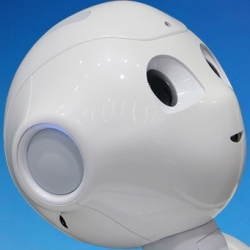
Other major advanced economies have fewer jobs at risk. The study estimates that 30 percent of jobs in the United Kingdom could be threatened by technical advancements in automation from AI and robotics, compared to 35 percent in Germany and 21 percent in Japan.
The U.S. has a higher percentage of jobs under threat by automation because more workers in the U.S. are employed in positions that require routinized tasks, like filling out paperwork.
Jobs most at risk of being done by new technologies are in industries related to transportation, manufacturing and retail.
To arrive at these estimates, PwC broke down the types of tasks of various jobs in different industries. The researchers then applied an algorithm that took into account the “automatability” of those tasks and characteristics of the workers employed to do them.
One example of how jobs in the U.S. may be more susceptible to automation than jobs in the U.K., according to the study, is in the financial services sector. Although both countries have similarly service-dominated economies, financial services jobs in the U.S. are more retail oriented and routinized. Jobs in financial services in the U.K., however, are mostly occupied by professionals working in international banking, whose jobs are harder to automate and require more education.
More of Germany’s workforce is employed in manufacturing than the U.K., which are the types of jobs that could one day be done by robots, according to the report, accounting for its higher percentage of jobs that may potentially be automated.
In Japan, the low percentage of jobs at risk to automation compared to the other major economies examined in the study may, in part, have to do with the fact that jobs that are highly “automatable” in other countries are historically less so in Japan. Retail, for example, requires more training and skills in Japan, where workers have more management and organizing tasks, than similar jobs in the other countries studied, the report notes. (Japan also already utilizes a significant amount of automation, such as vending machines at fast-food restaurants that often handle the job of a cashier.)
The researchers point to a few policy interventions that might be explored to address the effects of broad job loss due to automation, like workforce re-training programs or universal basic income schemes.
But new policies require government action, and in the U.S, where job loss to automation may reach 38 percent by the 2030s, according to the study, the Trump administration doesn’t seem immediately concerned.
At an event with Axios Friday morning, Treasury Secretary Steve Mnuchin said that job loss to technical advancements in AI and robotics “isn’t even on their radar screen” and that he imagines these changes are more like “50 to 100 more years away.”
